In this section of the website, you will find information about the Intent, Implementation and Impact to teaching English at St Bede’s Catholic School. View our course information below:
The curriculum is sequenced coherently, allowing the interweaving of topics to support the acquisition of key concepts; it is compatible with the key requirements of the National Curriculum and robust collaboration between primary and secondary phases ensures progression. Curriculum components are repeated over time, ensuring all pupils practise retrieval, master skills and concepts, develop long term memory and make progress from starting points. Retrieval tasks are built into all lessons to enable pupils to remember more. The ‘Bigger Picture’ is shared with pupils, providing them with a rationale for their learning and to make links between lessons, allowing them to know more and remember more. Teachers ensure lessons provide a supportive environment for all pupils including those with SEND, removing barriers to learning and participation through adaptive planning, modelling, scaffolding, explicit instruction and metacognitive strategies. Accurate, regular assessment enables an informed and systematic judgement to be made about a pupil’s knowledge, understanding, skills and attitude. Pupils are provided with feedback and set ‘perfecting our work’ targets to close any learning gaps. Teachers provide a language-rich environment. Key tier 2 and tier 3 vocabulary is mapped out carefully across the curriculum to enable our pupils to learn the correct words and phrases in the right order. A phonics-led approach is used to improve reading and spelling. Carefully selected texts are used to foster a culture of scholarly reading. Pupils are given opportunities to consider how their learning links to future study and careers, and the importance of British Values. Pupils develop social morality and their own individual voice through discussing and debating the texts they read and write to motivate, challenge injustice and promote action. The curriculum is enriched to include experiences outside the classroom, such as theatre trips, drama workshops, competitions (Spelling Bee and Young Writers Competitions) as well as extracurricular clubs such as the media and film club, journalism club and book club. Homework tasks allow pupils to consolidate learning, read a wide range of related texts independently and expand their vocabulary. GCSE English language GSCE English Literature A Level English Literature At St Bede’s, our intention is to In Year 7, the way students respond to a text becomes more challenging as students begin to look at more complex ways meanings are created. They are expected to develop their own interpretations using knowledge of how language, including figurative language, vocabulary choice, grammar, text structure and organisational features, and theme, create meaning. Students study texts chronologically so they are aware of the literary timeline. They consolidate and master skills from Key Stage 2 and become aware of authorial intent, choosing appropriate evidence to support their views of a text independently. In Year 8, they look at how meaning is created by developing interpretations after analysing methods independently. In Year 9, students study texts as conscious constructs and will compare how meanings are created. In Key Stage 4, students read critically, identifying and interpreting themes, ideas and information in a range of literature and other high-quality writing. They read in different ways for different purposes, comparing and evaluating the usefulness, relevance and presentation of content for these purposes; identifying bias and misuse of evidence, including distinguishing between statements that are supported by evidence and those that are not. Students compare texts: comparing two or more texts critically with respect to the above. In Key Stage 5, working within historicist principles means students are required to read widely across a range of texts and connect them across time and topic. Working with texts over time involves looking at ways in which authors shape meanings within their texts. It also involves thinking about a wide range of relevant contexts, some of them to do with the production of the text at the time of its writing, some (where possible) to do with how the text has been received over time and, most of all in this specification, contexts to do with how the text can be interpreted by readers now. And finally, because texts and their meanings are not fixed, interpretation is not fixed, and multiple interpretations are possible. English Literature privileges the process of making autonomous meaning, encouraging students to debate and challenge the interpretations of other readers as they develop their own informed personal responses. In Year 7, students consolidate and build on the knowledge from Key Stage 2 and become aware of the text as a construct. They will consider using sentences, paragraphs and punctuation for effect in familiar and unfamiliar circumstances. Then, in Year 8, students move beyond text purpose to understanding and producing a viewpoint using rhetoric, consider the most effective vocabulary choices and methods (for emotional impact) to establish a sustained mood/tone. In Year 9, students manipulate and consciously construct texts for emotional impact, establishing their own consistent voice. Their writing becomes coherent and fluent, consciously structured. In Key Stage 4, students produce clear and coherent texts: writing effectively for different purposes and audiences: to describe, narrate, explain, instruct, give and respond to information, and argue; selecting vocabulary, grammar, form, and structural and organisational features judiciously to reflect audience, purpose and context; using language imaginatively and creatively; using information provided by others to write in different forms; maintaining a consistent point of view; maintaining coherence and consistency across a text. They will write for impact: selecting, organising and emphasising facts, ideas and key points; citing evidence and quotation effectively and pertinently to support views; creating emotional impact; using language creatively, imaginatively and persuasively, including rhetorical devices (such as rhetorical questions, antithesis, parenthesis). In Key Stage 5, whilst the course invites a variety of written response types, these all encourage critical debate. In each task, students are required to argue and to show personal responses and critical preferences, supported by the terminology relevant to the topics and contexts with which they are engaging. In doing so, they show ‘creativity’. Taken as a whole, therefore, English Literature not only equips students with the knowledge and skills needed for both exams and non-exam assessment, but also opens up a rich, challenging and coherent approach to English literature that provides an excellent basis for studying the subject at university. In Year 7, students consolidate and build on the vocabulary and discussion skills from Key Stage 2 by using discussion in order to learn; they become able to elaborate and explain clearly their understanding and ideas. In Year 8, students become competent in the arts of speaking and listening, making a formal presentation. In Year 9, they learn the conventions of and consolidate the conventions of debate. They will participate in a debate. In Key Stage 4, students present information and ideas: selecting and organising information and ideas effectively and persuasively for prepared spoken presentations; planning effectively for different purposes and audiences; making presentations and speeches. They respond to spoken language: listening to and responding appropriately to any questions and feedback and use spoken Standard English: expressing ideas using Standard English whenever and wherever appropriate. In Key Stage 5, students are encouraged to participate in critical debate. In each task, students will be required to argue and to show personal responses and critical preferences, supported by the terminology relevant to the topics and contexts with which they are engaging. Across Key Stage 3, students study texts from different eras and cultures. They study themes as golden threads entwined throughout the curriculum. They apply their knowledge of social, historical and cultural events and theme to both familiar and unfamiliar texts. Students study texts from the past in Year 7, introducing context and theme. They then build on that knowledge having developed schema in Year 8 and Year 9. In Key Stage 4, students use the context of the text and draw on knowledge and skills gained from wider reading; recognising the possibility of different responses to a text. They identify the main theme or themes; summarising ideas and information from a single text; synthesising from more than one text. In Key Stage 5, the English Literature historicist approach to the study of literature rests upon reading texts within a shared context. Working from the belief that no text exists in isolation but is the product of the time in which it was produced, English Literature encourages students to explore the relationships that exist between texts and the contexts within which they are written, received and understood. Studying texts within a shared context enables students to investigate and connect them, drawing out patterns of similarity and difference using a variety of reading strategies and perspectives.Key Stage 4 and 5 Assessment objectives
Progression Map
Intent
Reading
Communication
Writing
Speaking and listening
Context and theme


